The Wild Cats of North America
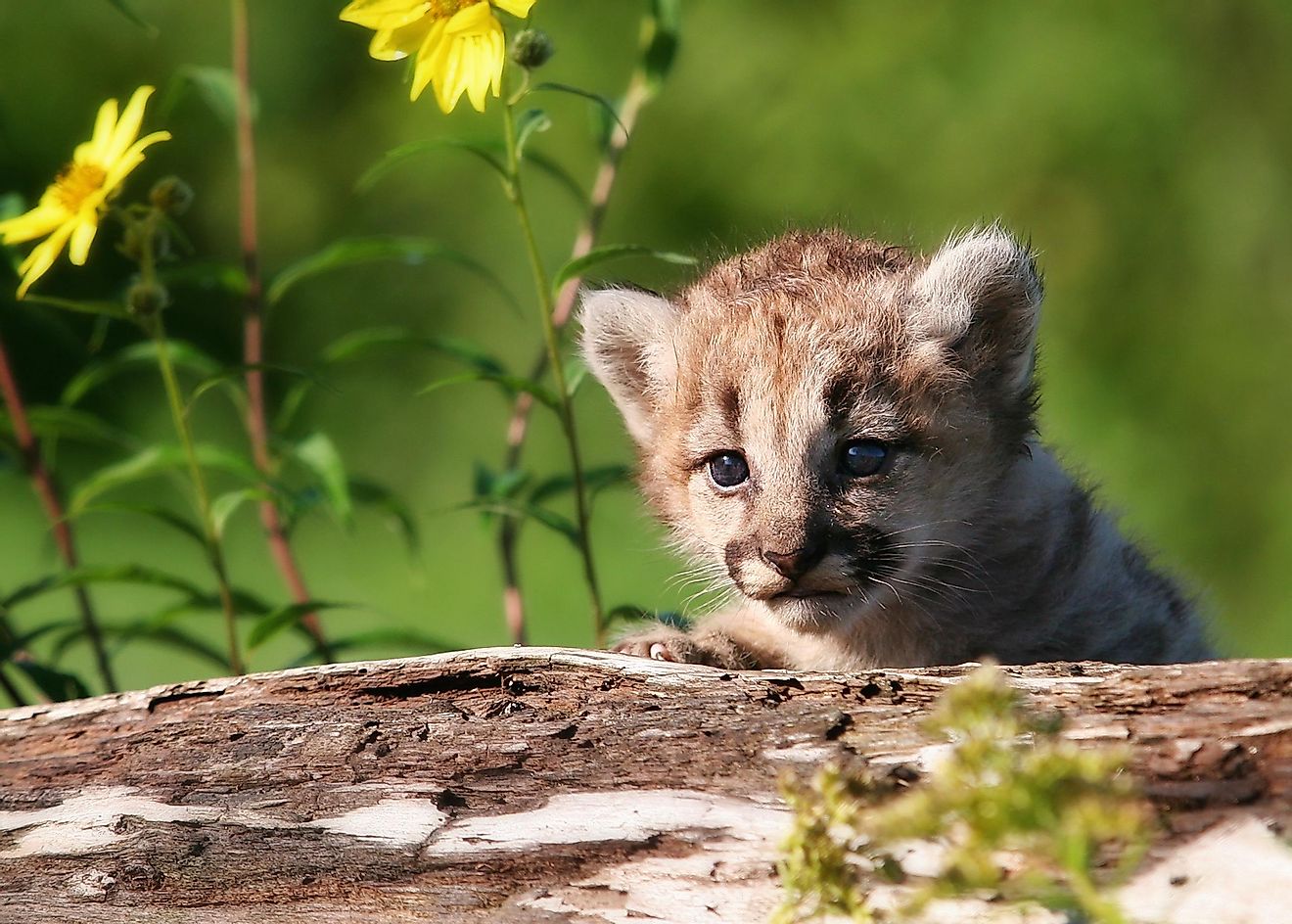
North America hosts two species of big wild cats and four species of small wild cats. The former group includes the jaguar and the cougar while the latter includes the ocelot, the Canadian lynx, the bobcat, and the jaguarundi. Here is a list of the wild cats of North America.
6. Canadian Lynx
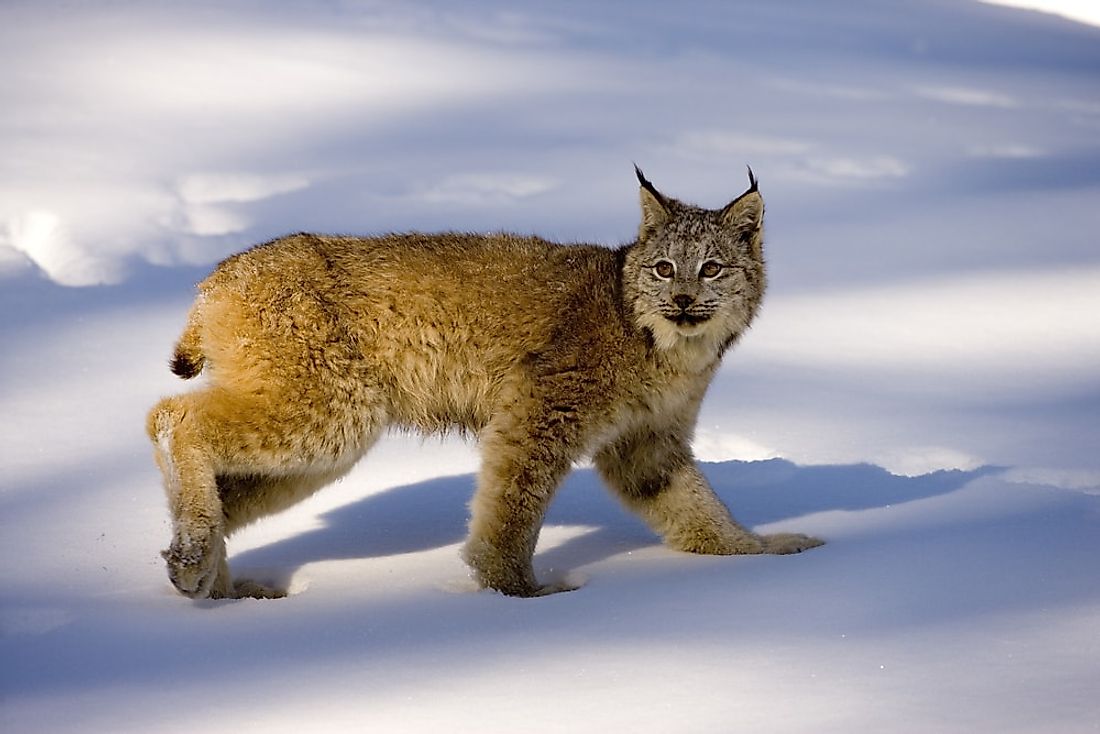
Lynx canadensis is one of the small wild cats living in North America. The species has the medium size, long tufts in the ear, a bobbed, black-tipped tail, and a facial ruff. The thick furs, long legs, and massive paws of the species help it adapt to the cold environment of its habitat. The range of the Canadian lynx stretches through Canada and also extends into parts of the US where they are found in Canada and in other parts of northern US. The range stretches as far south as the Rockies in Colorado. Snowshoe hares are preferred prey of the Canadian lynx. Other animals like mice, grouse, red squirrels, etc., are also consumed by this species.
5. Bobcat
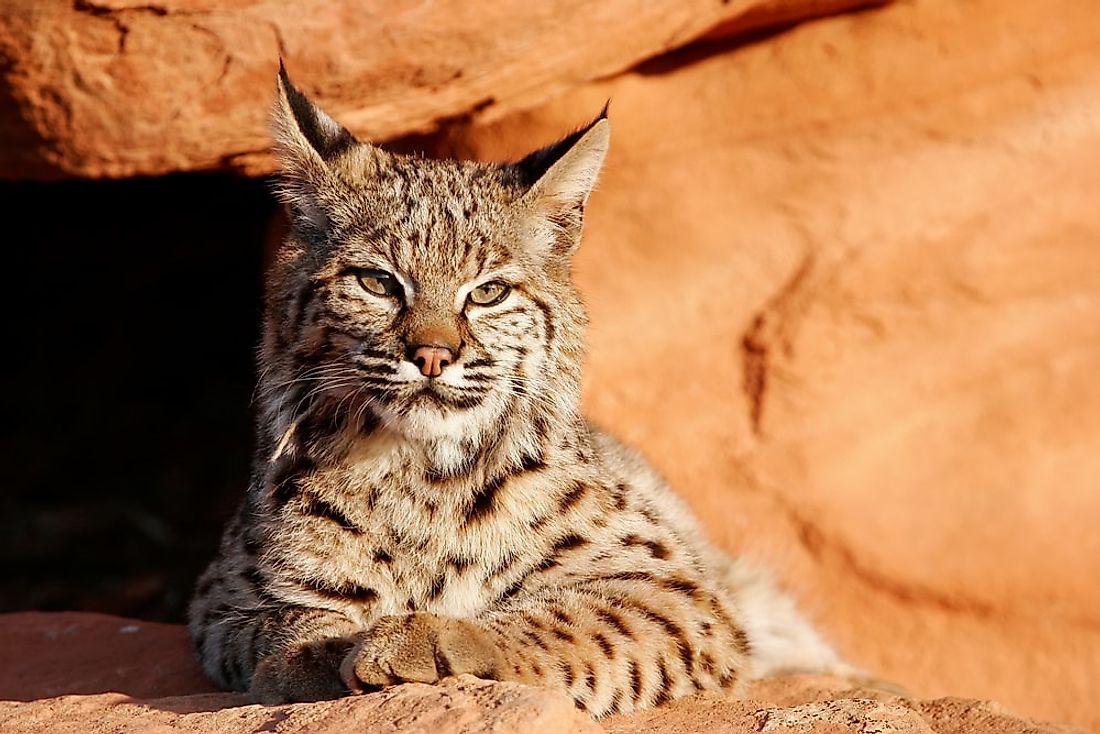
The Lynx rufus is another small wild cat species whose range stretches from southern Canada to central Mexico. There are 12 known species of this wildcat. The cat is found in wooded areas, edges of forests and urban areas, wetland habitats, and even semi-arid regions. The bobcat is quite similar in appearance to the Canadian lynx. Rabbits and hares are the preferred prey of the bobcat. However, this wildcat also hunts rodents, small birds, insects, etc with the climate and habitat determining the selection of the prey. The bobcat is a solitary species and highly territorial in nature. The species has been subjected to considerable hunting pressures but has managed to maintain stable populations over the years. However, habitat loss currently threatens populations of the bobcat in several parts of its range.
4. Jaguarundi
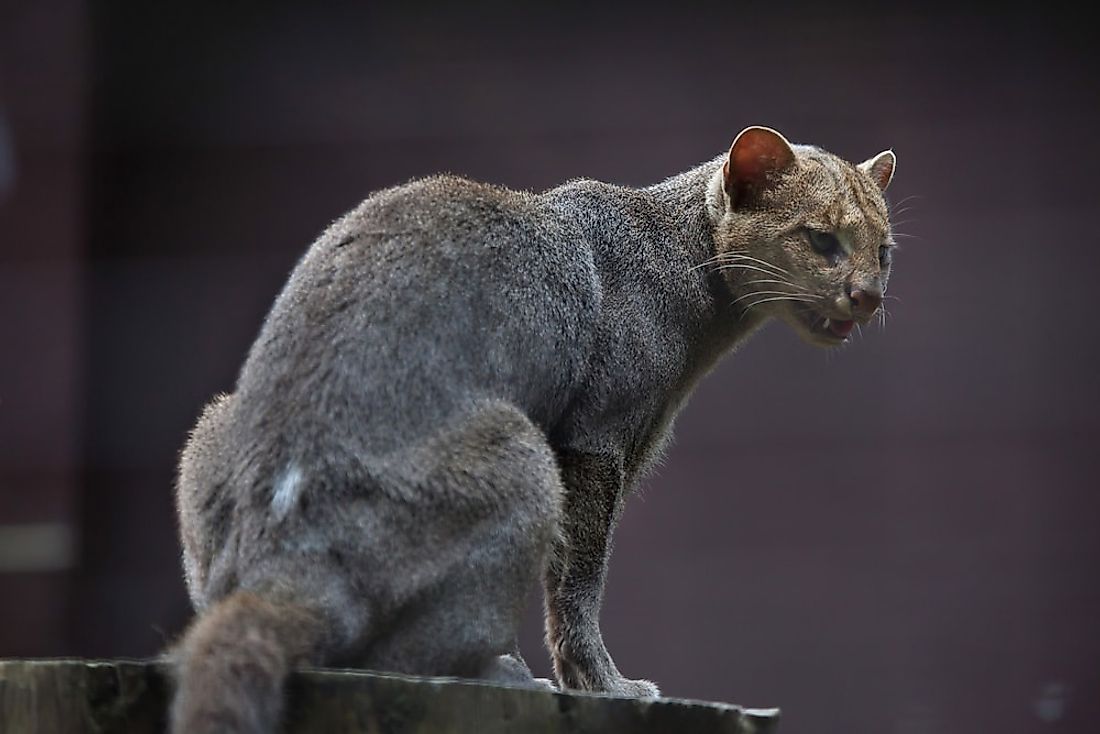
The Herpailurus yagouaroundi is also a wild cat found in North America. Its range, however, includes the southern parts of the continent starting from southern Texas and extends as far south as northern Argentina in South America. The cat prefers lowland brush habitats that are located close to flowing watercourses. Although the species is mainly found in lowlands, sightings have also been reported at as high as 10,500 ft. Jaguarundis are mainly diurnal in nature. They can climb trees but usually hunt on the ground. Rodents, small reptiles, and birds are their main prey. They also prefer to lead a solitary lifestyle.
3. Jaguar
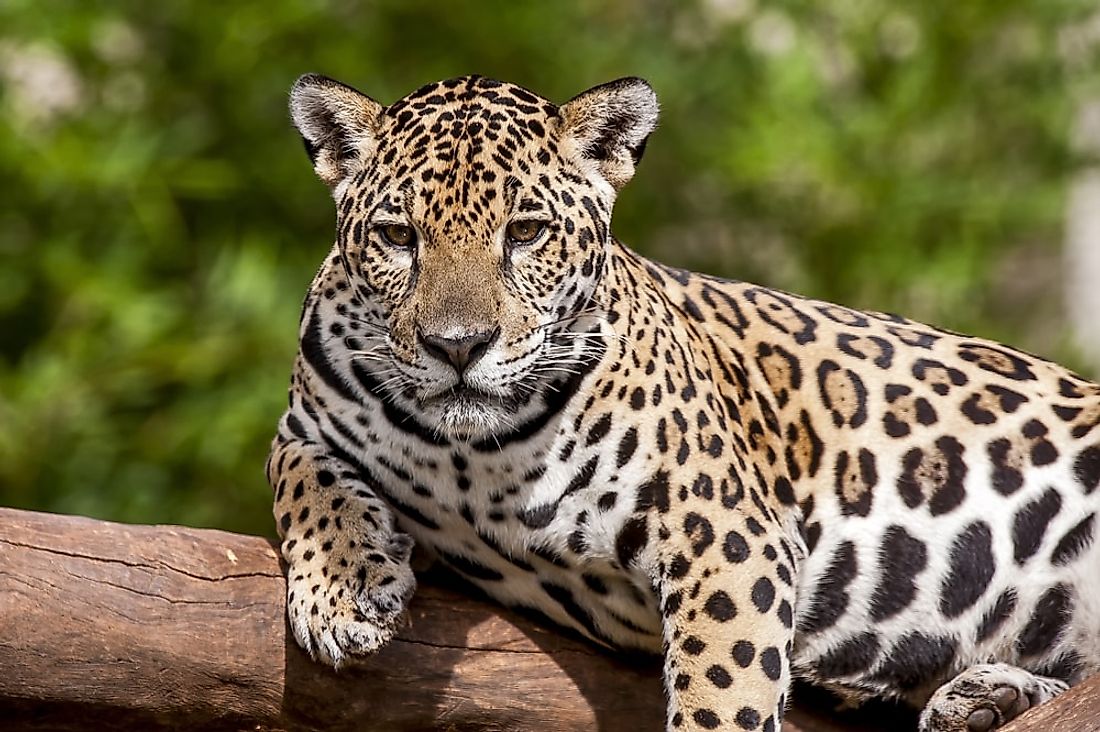
The Panthera onca is one of the two wild cat species that are found in the Americas. The range of this species extends from Mexico and Southwestern US to parts of South America. The species, however, had a more extensive range in the past that encompasses greater parts of the US. Due to its fast-declining population, the jaguar has been listed as a Near Threatened species. Habitat loss is the biggest threat to its survival. The jaguar is the biggest wild cat in the Americas.
2. Cougar
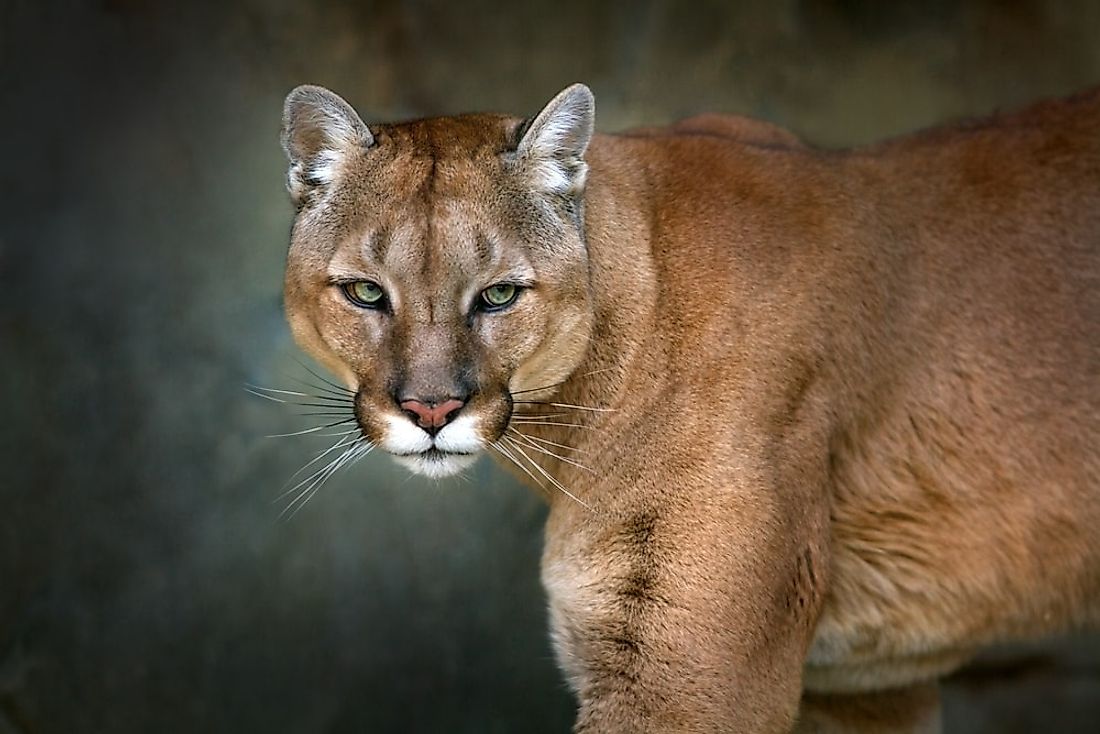
The Puma concolor, also called the mountain lion, is the second biggest wild cat found in North America. The species range from Yukon in Canada to South America’s southern Andes mountains. Thus, it has the most widespread range of all large terrestrial mammals found in the Western Hemisphere. The highly adaptable nature of the species is one of the factors responsible for its wide range. The cougar is a highly solitary and secretive species. It is both crepuscular and nocturnal in nature. The cougar has a very wide prey base. Deer is one its most common prey but the cougar also hunts rodents, livestock, and even insects. Although it is a big cat, it is not always the apex predator in its range. Often, other larger predators like the grizzly bear, jaguar, the gray wolf or the black bear take this position.
1. Ocelot
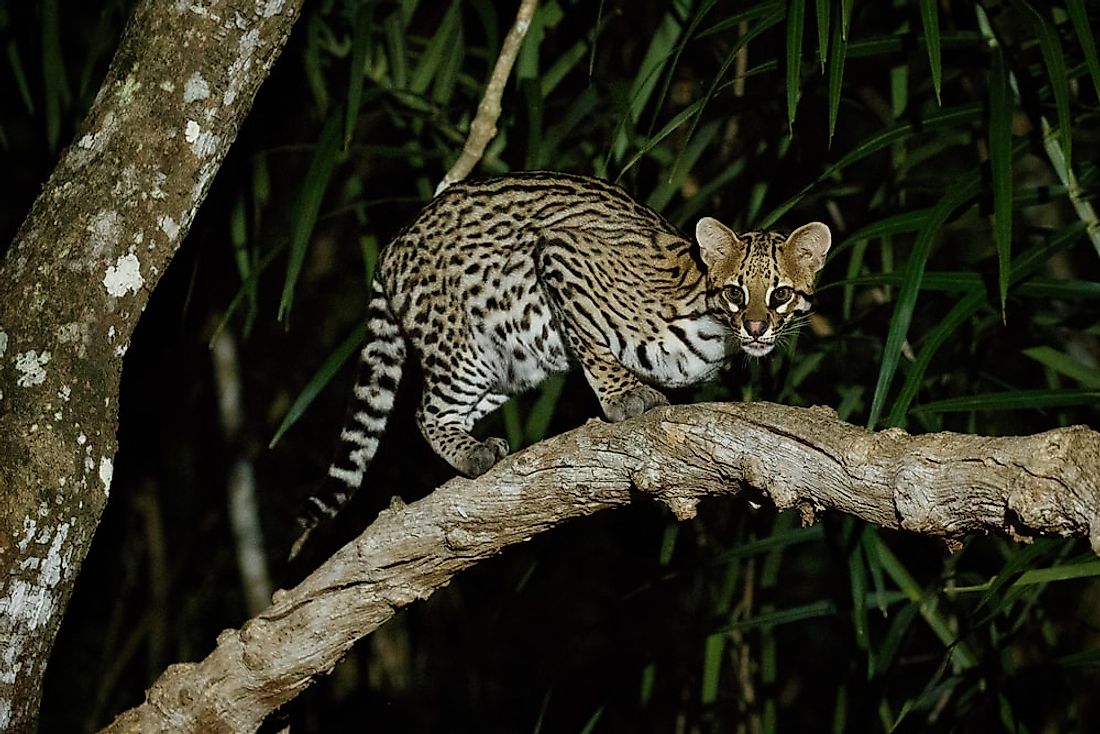
The Leopardus pardalis is one of North America’s wild cats. It is about two times the size of a domestic cat. The ocelot has a marked fur displaying a variety of patterns. Each cat has its unique pattern. The ocelot has a wide range extending from the southwestern US across Mexico to parts of South America. Ocelots are found in various types of habitats including mangroves, savannas, marshes, forests, and more. Ocelots are solitary, territorial, and nocturnal by nature. They prefer to rest on trees or in the shade of bushes. Ocelots have a wide prey base that includes rabbits, frogs, rodents, birds, monkeys, etc.







